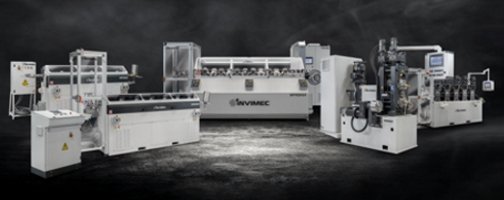In the industrial world, rolling is one of the most important process for precious and non-precious metals. Nowadays, most metal products are rolled, during the production process.
The rolling mill’s perfect results are due to little and constant improvements during a long period of time.
It is important to know: how was rolling process developed? What are the results achieved?
The history: from hand rolling mill to motorized rolling mill
Rolling mill has a long history: first rudimentary models for goldsmith sector were discovered in Middle East and are dated back to 600 B.C.
The first project of rolling machine seems to be a Leonardo Da Vinci’s sketch dated 1480, in which is illustrated the possibility to put material between two cylindric rolls in order to modify its thickness. Shortly after, in 1500, a rolling mill was used for the first time to obtain a regular gold plate in order to produce coins.
One of the most important rolling mill evolution wan around 1750 in Pforzheim, a German city famous for its watch and jewelry making industry, so much that is referred to as “the Golden City”.
Here were invented the first motorized rolling mills, made with two hardening steel cylinders: between them was insert a metal plate or wire, in order to be thinned little by little, until the thickness desired.
The real revolution is due to the introduction of electricity. In 1923, in Kentucky, the first rolling mill for plate was built: a great innovation for the strip steel production. Later, in 1929, was invented the cold rolling mill system, in order to further reduce the metal thickness.
The modern cold rolling mill
Over the years, machines for rolling metal kept developing and the innovation is still going on today.
Nowadays, rolling mills are called trains of rolls: machines for processing metals with high performance and speed, able to produce wire or bars of heavy material or thin sections, with specific dimension tolerance.
The innovation continues: trains of rolls are automated, have a high productivity, superlative performance, all this with ease of use, total safety and the possibility of working without an operator.
Cold rolling mills
In cold rolling process, the material has a better mechanical strength and surface finishing, to prevent the metal from oxidising.
Invimec offers different version of cold train of rolls, including Quarter finishing rolling mill and wire rolling mill. The first is equipped with four rolls: two rolls the material and the other two are for support.
Wire rolling mills can produce wire without corners or twisting, so the final product will have constant quality and is repeatable. Train of rolls can form different products, such as plate and sheet, in order to obtain a more precise thickness, thanks also to different number of passages.
Invimec: a company for rolling
Thanks to over 55 years of experience in the design and manufacture of roller machines for goldsmith and industry, Invimec is specialized in cold rolling machines.
Train of roll was born for massive production and high speed, but during the years, Invimec reached also small and medium companies thanks to cold rolling technology.
This process does not require full-time operator supervision thanks to the spoolers that simplify the procedures considerably. It is also possible to obtain different shapes depending on the customer need.
Invimec’s competences and know how can solve specific and niche problems with cold rolling mills, both in goldsmith, watchmaking industry and metal industry.
Not only history, but also future and innovation: Invimec team works everyday with passion to find the ideal solution for every need.
